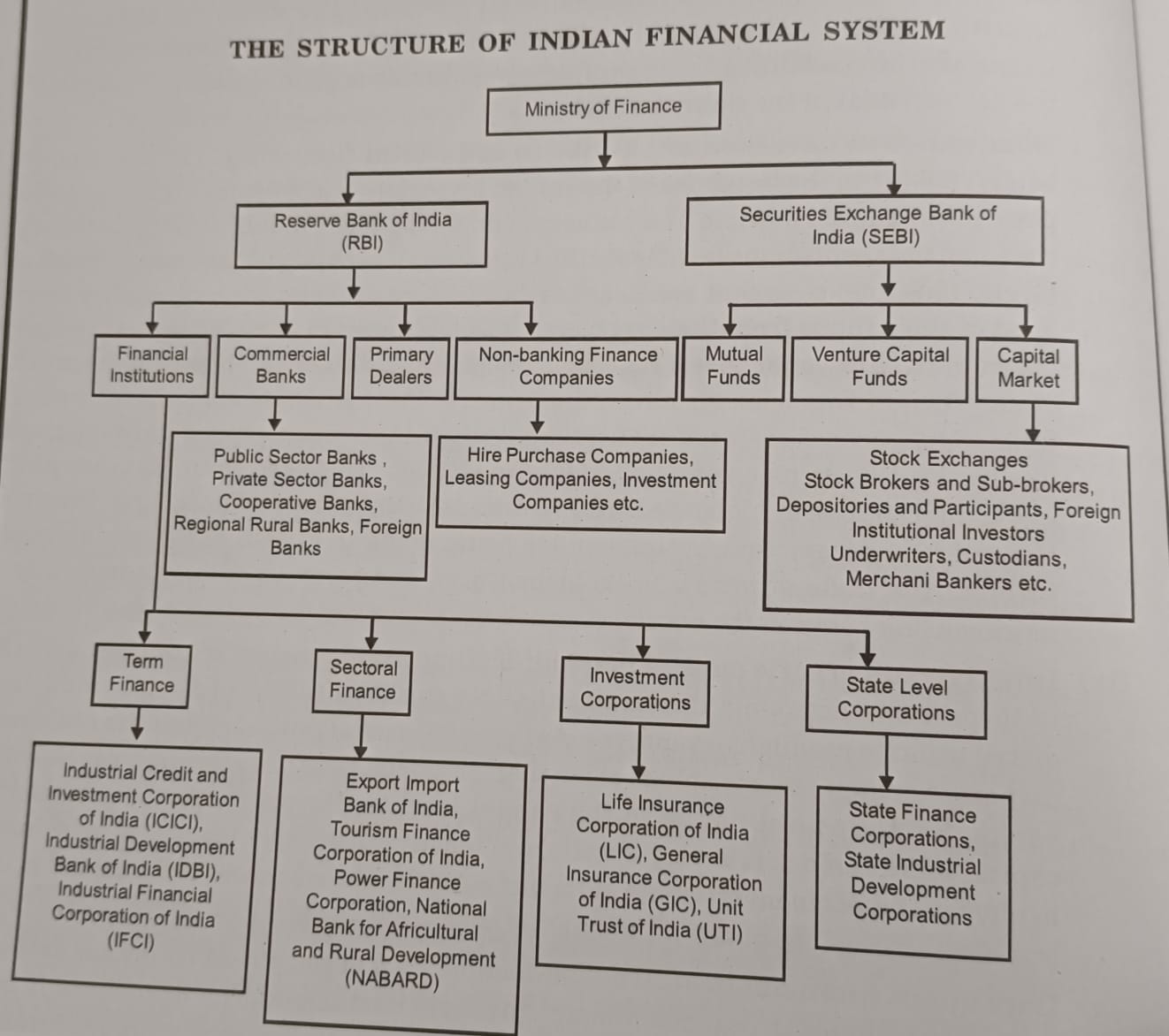Structure of the Financial System¶
The structure of a financial system varies from one country to another, but its primary purpose remains the same: to facilitate the flow of funds and capital within an economy. A well-structured financial system is essential for efficient resource allocation, economic growth, and stability. Here, we'll explore the key components and layers that make up the structure of a typical financial system.

1. Financial Institutions¶
Financial institutions are the core entities within the financial system that provide various financial services to individuals, businesses, and governments. These institutions can be categorized into several types:
a. Commercial Banks¶
Commercial banks are the most well-known financial institutions. They accept deposits from customers and provide loans, mortgages, and other financial services. They also play a crucial role in the payment system by offering checking and savings accounts.
b. Investment Banks¶
Investment banks specialize in facilitating capital-raising activities for corporations and governments. They underwrite securities, advise on mergers and acquisitions, and provide a wide range of financial services to institutional clients.
c. Credit Unions¶
Credit unions are member-owned financial cooperatives that offer banking services, including savings and checking accounts, loans, and mortgages. They are often community-based and serve a specific group of members.
d. Insurance Companies¶
Insurance companies provide various types of insurance coverage to individuals and businesses, helping them manage and mitigate risks. Common types of insurance include life, health, property, and casualty insurance.
e. Pension Funds¶
Pension funds manage retirement savings on behalf of individuals and invest these funds in a diversified portfolio of assets to generate returns. They play a critical role in retirement planning.
f. Mutual Funds¶
Mutual funds pool money from multiple investors and invest it in a diversified portfolio of stocks, bonds, or other securities. They offer a convenient way for individuals to invest in financial markets.
2. Financial Markets¶
Financial markets are platforms where buyers and sellers come together to trade various financial instruments. These markets can be categorized based on the types of assets being traded:
a. Stock Markets¶
Stock markets facilitate the buying and selling of company shares (equity). They provide companies with a means to raise capital by issuing stocks to the public.
b. Bond Markets¶
Bond markets are where debt securities, such as government bonds and corporate bonds, are bought and sold. Bonds represent loans made by investors to issuers, who promise to repay the principal and interest.
c. Commodity Markets¶
Commodity markets deal with the trading of physical goods, such as agricultural products, energy resources, and precious metals. Futures contracts are commonly used in these markets.
d. Foreign Exchange (Forex) Markets¶
Forex markets involve the exchange of different currencies. They play a vital role in international trade and finance, allowing businesses to hedge currency risk.
3. Regulatory Authorities¶
Regulatory authorities are government bodies responsible for overseeing and regulating the financial system. They set rules and standards to ensure the safety, soundness, and fairness of financial institutions and markets. Key regulatory authorities may include central banks, financial market authorities, and securities commissions.
4. Central Banks¶
Central banks are a critical component of the financial system, responsible for controlling the money supply, setting interest rates, and maintaining financial stability. They also act as lenders of last resort during financial crises and play a role in currency management.
5. Intermediaries¶
Intermediaries, such as brokers and investment advisors, facilitate transactions between buyers and sellers in financial markets. They provide expertise and access to markets for investors and businesses.
6. Payment Systems¶
Payment systems enable the transfer of funds between individuals, businesses, and institutions. These systems include electronic funds transfer, wire transfers, and payment cards (credit and debit cards).
7. Financial Instruments¶
Financial instruments represent tradable assets or contracts, including stocks, bonds, derivatives, options, and futures. These instruments provide investors with various ways to invest and manage risk.
8. International Financial Institutions¶
International financial institutions, such as the International Monetary Fund (IMF) and the World Bank, operate on a global scale and provide financial assistance, policy advice, and development support to countries worldwide.
9. Non-Bank Financial Institutions¶
Non-bank financial institutions, like finance companies and leasing companies, offer financial services similar to banks but do not hold banking licenses. They often specialize in specific areas, such as auto loans or equipment leasing.
In summary, the structure of a financial system is a complex network of institutions, markets, regulatory bodies, and intermediaries that work together to facilitate the flow of funds, support economic activities, and promote financial stability within an economy. Understanding this structure is crucial for individuals, businesses, and policymakers to navigate and make informed financial decisions.